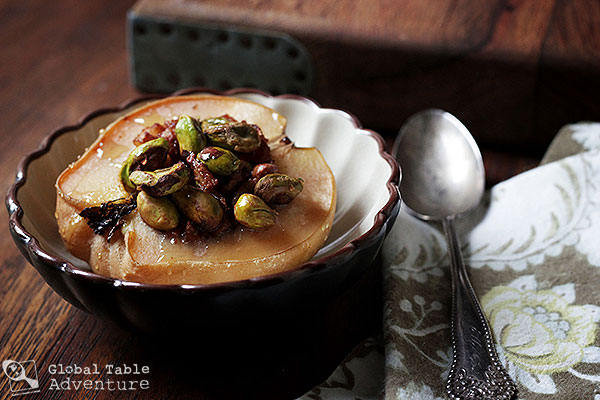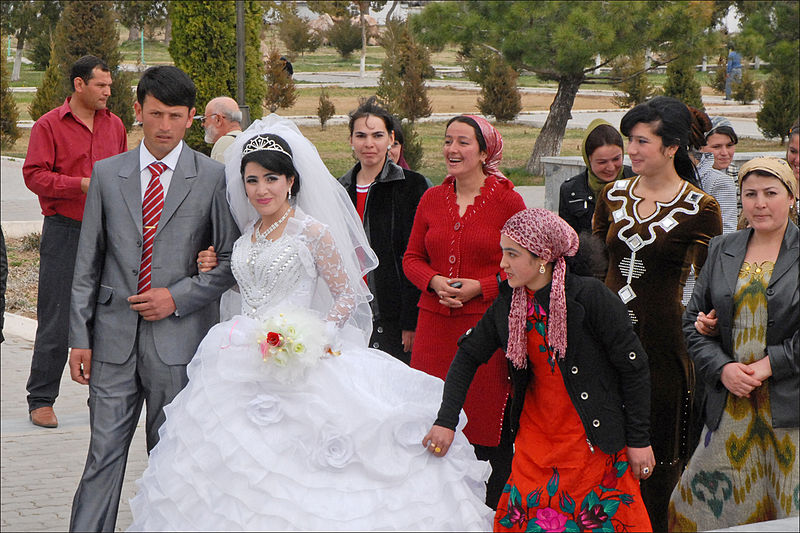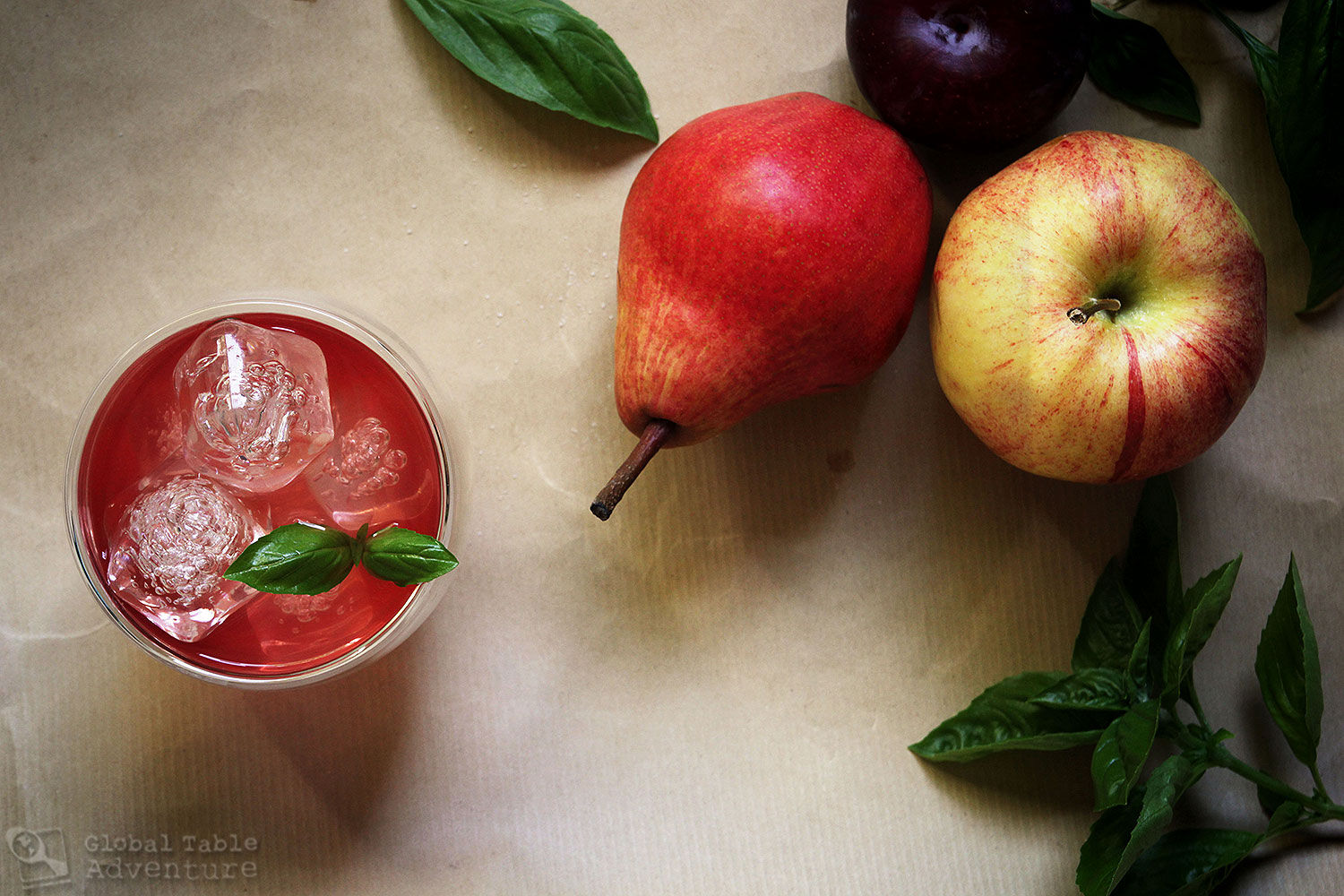
Today, we enjoy an autumn fruit punch from the heart of Uzbekistan’s Kyzyl Kum desert, shared with me by Paul Salopek, National Geographic fellow and journalist. The chilled punch quenches with ripe pear, apple, and plum, while a sprig of basil lends the memory of summer. An opportunity for our children At my grocery store, punch typically comes in a bottle or, more commonly, a box with a straw. At seven-years old, Ava has never considered what “punch” is, or how it might be made. This a good opportunity to remind our children that fruit punch is made from soft, sweet fruit – a seasonal thing, reliant on agreeable weather and the absence of pests. Punch came before refrigerators and standardization, each batch unlike the next, tasting only ‘of the moment.’ Once young children “get” the concept behind punch, they may begin to taste the individual fruits (or at least show interest in trying). Let them play with the recipe, and encourage them to invent their own favorite punch. After all, it’s as simple as stewing hunks of …
Read More
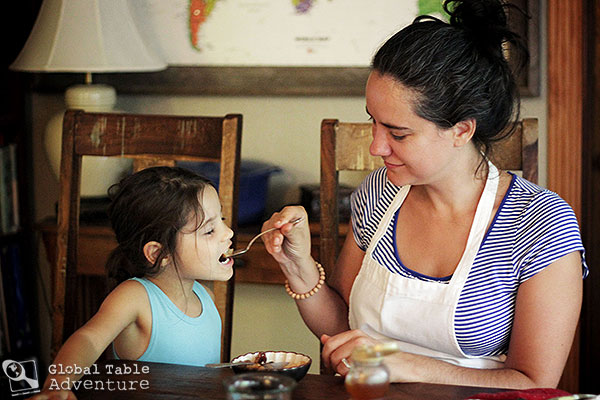
Stirring, stirring, stirring. Uzbekistan requires no stirring. Just a layering of this vegetable, then that… a stuffed quince and few chopped nuts. But no stirring. Definitely nothing of the sort. Have you ever noticed how hard it is to just wait? To wait and do nothing? To wait and trust that everything will come out okay, no burning, no overcooking, no drying out? How hard it is to not stir the pot? With just three weeks until our big event at Philbrook and two months until the end of our Global Table Adventure, this message feels particularly apropos. I feel like there should be something I should be doing. But sometimes we just need to wait, and savor the results when the time comes. THIS WEEK’s FOOD Harvest Stew | Dimlama [Recipe] What I loved most about this dish: The key to dimlama is browning the onion and meat, so it’s no coincidence that the resulting brown gravy is also my favorite part of the stew. The hint of cumin and cilantro gives the dish the characteristic Uzbek edge, making it …
Read More
Say “Quince” to an Uzbek lady, and you just might see her flush with delight. Though they aren’t eaten raw, baked quince are soft and tender, like a pear. The taste is mild, something like an apple, but with traces of pear, too. Uzbekistan is the third greatest producer of quince, after Turkey and China. They include the fruit in plov, stir it into preserves, and they bake it up with honey, and sometimes even stuff it nuts… as we’re doing today. How to choose a quince: – look for white fuzzies on the stem end, which indicate freshness – a ripe quince is yellow, although slightly green fruit can be used for this recipe – it can be bumpy and odd-shaped, but there should be no scarring or other markings. Serves 4-6 Ingredients: 2-3 quince (or 3 large apples) 1/2 cup pistachios 1/2 cup walnuts, chopped (or substitute more pistachios) 1/2 tsp cinnamon honey, to taste (1-2 Tbsp per person) For the baking dish: 1 cup water 2-3 slices lemon Method: Let’s go to …
Read More
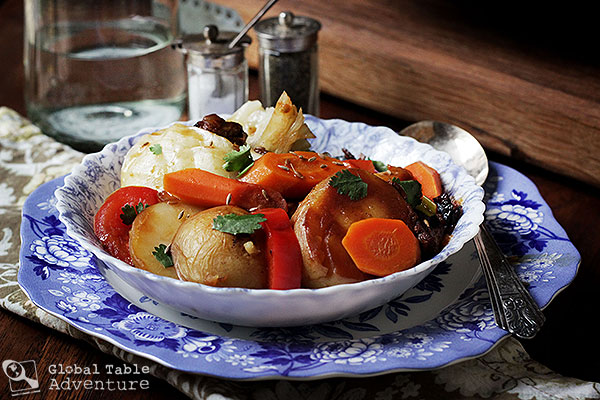
If it were up to me, every gardener would know about Dimlama, the Uzbek one-pot answer to harvest-time (no canning required). While every Uzbek family makes it a little differently, potatoes, carrots, peppers, and tomatoes are standard fare, as is a hearty sprinkling of whole cumin seeds. The key to dimlama rests in the layering. First of all, lamb is browned, then onions are added in the mix. One they submit to browning, the remaining vegetables are layered (and, once they’re added, you never stir the pot!). The final layer is always cabbage, which helps seal in the moisture. When the vegetables release their juices, they drip down to the bottom of the pan and deglaze all those nummy browned bits. The result? A luscious brown gravy worthy of being sopped up by a nice piece of Central Asian Yogurt Naan. Serves 6 Ingredients: 1/2-1 lb cubed lamb or beef 1 large onion, sliced in quarter moons 5 small yellow potatoes cut in half 2-3 large carrots, peeled & sliced 2 red peppers, sliced in strips 2 …
Read More

“Don’t choose a house—choose neighbors. Don’t choose a path—choose traveling companions.” Uzbek Proverb This week we’re going to Uzbekistan via stovetop travel and the timing couldn’t be better: September is harvest time. Right on cue, my tomato plants recently produced dozens of cherry tomatoes. The look like bright like jewels against the green landscape. In Uzbekistan, when it’s harvest time, the people gather up their bountiful produce and make Dimlama. Then they follow it up with stuffed apples or quince. Delicious. Both recipes and the meal review will be posted throughout the week. Lamb & Vegetable Pot | Dimlama [Recipe] Enjoy the garden’s bounty with this layered pot of tender lamb, potato, onion, carrot, pepper, cabbage, and more, seasoned with cumin and a sprinkling of fresh cilantro. Honey & Pistachio Stuffed Quince [Recipe] An easy combination of honey, cinnamon, pistachios, walnuts, and roasted quince. Great with a (non-traditional) scoop of ice cream. For those looking for a simpler option, try just adding honey and cinnamon to the quince. Also, apples may be substituted for the quince. …
Read More
Upon our friends, Our strength depends. Uzbek Proverb Before this adventure, it often took a personal connection to help me tune into another part of the world, and such was the case with Uzbekistan. I never gave much thought to the long central Asian country, until college, when I became friends with a girl named Marina. She moved to the states from Uzbekistan when she was a girl. We jogged together, 3 miles a day, 6 days a week. We never ran so hard that we couldn’t talk. And boy did we ever talk. She stood with me at my wedding in 2008, along with my sister and my friend Becky. Speaking of weddings, here’s a photo of an Uzbek bride I found… look at her dress! Amazing. (As are the other women’s dresses!) Marina tells me Plov is the most traditional Uzbek food – the giant, communal pot of rice cooked with lamb and a few vegetables, rather like the Plov Recipe we tried for Turkmenistan. Unlike the plov we made for Tajikistan, however, Uzbek …
Read More



